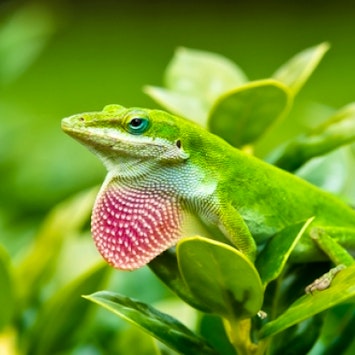Ask a Naturalist: What is herping?
Discovery Place Nature

Herp is the insider's term for a creature that falls in the realm of herpetology, the study of reptiles and amphibians.
If you go looking for these creatures, the act is called “herping,” which comes from the Greek word for crawling.
Before you go crawling through the woods looking for some new cold-blooded friends, we have a few friendly reminders:
- Wear sturdy gloves, long sleeves and boots while looking for creatures, and avoid handling them as much as possible.
- Leave all of these creatures in their homes. They’re much happier in their habitat!
- Bring a camera to record the creatures you find, a sturdy stick to overturn rocks and logs, a cell phone in case of emergencies and a buddy. Don’t go into the wilderness alone!
Which animals are you likely to find while herping?
There are lots of snakes around Charlotte. You may find garter snakes, ring neck snakes, black rat snakes, corn snakes, water snakes, pine snakes, king snakes, or even the venomous copperhead. Treat all snakes with respect and do not try to handle them. The best way to identify a snake is by snapping a quick photo and then examining and comparing it to a field guide at your leisure.
If you’re down by the water, there are several kinds of turtles to encounter. The ones most often found on land — not in the water — are box turtles. They can pull all their limbs into their shells to keep themselves safe! But they can’t swim well, so don’t try to put them into the water.
Aquatic turtles include the yellow bellied slider, painted turtle, mud turtle and even the large snapping and alligator snapping turtles. You’ll often see these turtles sunning, or basking, on rocks or logs, or sometimes you’ll just see their heads poking out of the water. They need to breathe air just like we do, so they are up at the surface frequently.
While walking near rocks, you might spot one of our native lizards. The green anole and five-lined skink are probably the most commonly encountered lizards in our area.
Green anoles can change their skin from brown to bright green, and the patch under their throat, called their dewlap, can change to bright pink. Five-lined skinks are very fast!. Their tails are a vivid blue, especially when they’re young, making them an easy species to identify. They also can drop their tails off if attacked.
Nighttime provides a wonderful opportunity to find some toads and frogs, and our yards are a great habitat for them. Sixteen species of frogs and toads live in the Charlotte area, including tree frogs. The easiest way to identify frog species is by their calls. If you find a frog, make sure you don’t touch it! The oils in our skin can make them sick, and their bodies are very delicate.
Newts and salamanders also live in our region and are cousins to frogs and toads. They look a lot like lizards, but they’re amphibians.
Head out and see what kinds of creatures you can find, and send in a photo of any you’re struggling to identify. Happy herping!


